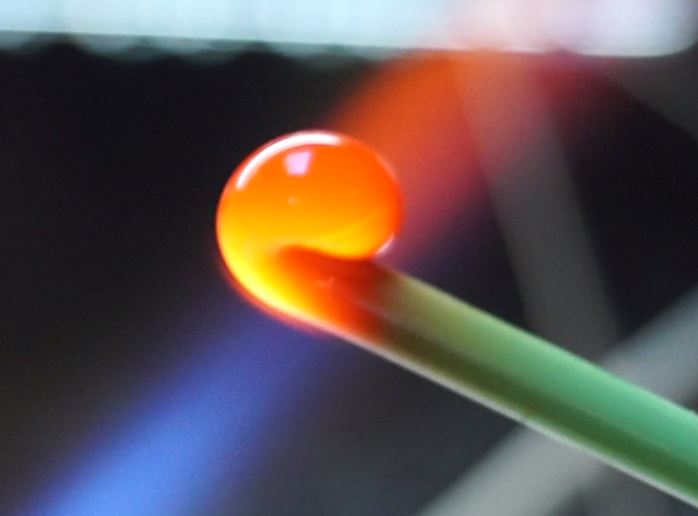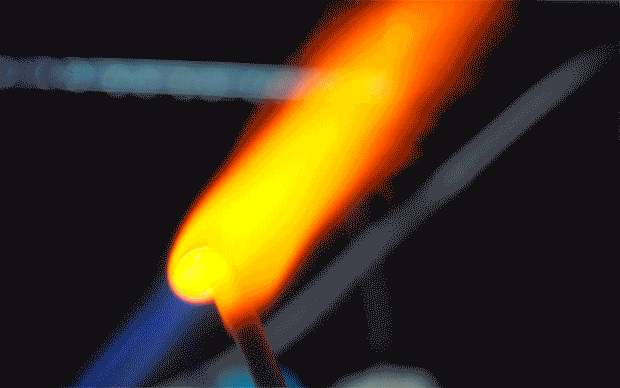Hot glass has always fascinated me. I love watching as it melts and droops and glows. I used to spend so much time watching the craftsmen that do public displays at any given opportunity. You can imagine that, when I learned you can tinker with this at home for relatively cheap, I jumped at the opportunity.

Creating small pieces of art from glass is generally called lampworking. Unlike “glass blowing,” you’re not inflating any cavities. These works of art are typically very small and are commonly beads.
A basic bead making kit can be found on Amazon or at your local seller for under $100. This should include everything you would need to get started, except a canister of gas (this can be purchased at your local hardware store). These bead making kits allow you to start experimenting with hot glass at home, by making decorative beads.

- Coat the end of your steel rod, also called a mandrel, in bead release and let it dry (if you don’t, that glass will stick there forever)
- Light your torch and slowly introduce the glass to the heat by waving it in and out of the flame
- After the glass is heated gradually, let it rest in the flame until it softens. Rotate to keep from dripping
- Touch the soft glass to the mandrel and rotate the mandrel to pull the glass around it.
You’ve made your first bead! Once it stops glowing red, place it in the fiber blanket to cool for a couple hours.
After you’ve mastered this basic maneuver it is time to start playing. You can make your beads as complex or as simple as you want, or even start exploring different shapes. Personally, I enjoy making octopuses.
It is important to note that your creations may look nice, but they have not been annealed. Annealing involves placing these items in a kiln and heating and cooling them in a certain way. This process relieves internal stresses that happen as the items are being created and makes them much stronger. You really shouldn’t sell any glass works that aren’t annealed as they are prone to cracking and fracturing even months after creation. The larger the item you’ve created, the greater the risk of a stress fracture.








